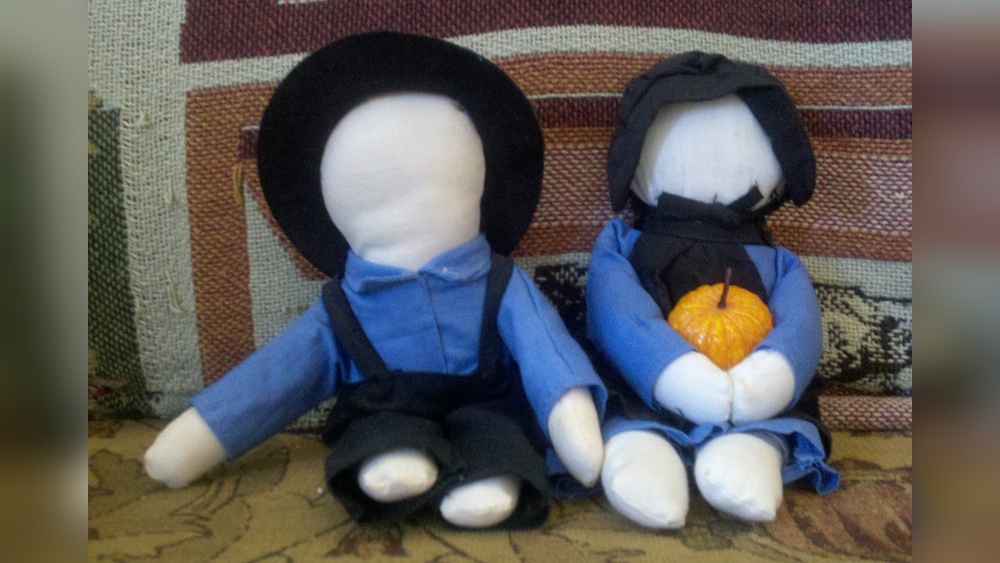Have you ever noticed that Amish dolls don’t have faces? It might seem strange at first, but there’s a deep meaning behind this unique tradition.
When you look closer, you’ll find that these faceless dolls reveal important values about humility, equality, and faith in Amish culture. Understanding why Amish dolls have no face can change the way you see more than just toys—it opens a window into a way of life that puts community and simplicity above all.
Keep reading to discover the fascinating reasons behind this simple yet powerful symbol, and why it might make you rethink what really matters in your own life.
Amish Doll Tradition
The Amish doll tradition stands out with its unique style. These dolls have no faces, which surprises many people. This style is not random. It reflects deep cultural and religious beliefs of the Amish community.
Faceless dolls are simple but full of meaning. They show how the Amish value humility and equality. The tradition connects to the Amish way of life and their faith.
Origins Of Faceless Dolls
The tradition began long ago among the Amish. Early Amish families made dolls without faces to avoid pride. They wanted toys that focused on inner values, not outward looks. This practice passed from parents to children over time.
Faceless dolls also helped children learn important lessons. These toys reminded them that no one is better than others. It was a way to teach respect and community spirit from a young age.
Religious Foundations
The Amish follow strict religious rules that shape many parts of life. One rule is about avoiding graven images. This rule means they should not create lifelike pictures or statues. Making a doll with a face could break this rule.
Amish believe that dolls with faces can cause vanity. Vanity is seen as a sin because it focuses on self-importance. Faceless dolls help keep children’s minds humble and free from pride.
Some Amish think dolls with faces might attract evil spirits. The eyes and mouth could be seen as openings for bad forces. Leaving dolls faceless protects the family and child from harm.
Cultural Significance
Faceless dolls reflect core Amish values like equality and humility. Without faces, the dolls show that all people are equal in God’s eyes. No one is above another based on appearance.
The dolls also connect Amish children to their heritage. Playing with faceless dolls reminds them of their community’s beliefs. It strengthens their identity and sense of belonging.
This tradition is more than just a style choice. It is a symbol of faith, culture, and simplicity. Amish faceless dolls continue to teach important lessons in each generation.

Credit: www.reddit.com
Symbolism Of Faceless Dolls
Amish dolls without faces carry deep meaning beyond their simple look. They reflect the core values of the Amish community. These dolls remind children and adults to focus on inner qualities over outward appearance.
The lack of a face shows that no one is better than another. It helps maintain the community’s ideals of humility and equality. The dolls also follow religious rules that guide Amish life.
Promoting Humility And Equality
Faceless dolls teach that pride and vanity have no place in life. Every person is equal in the eyes of God. The dolls do not highlight any special traits or features.
This makes all dolls look the same. It encourages children to see others as equals. The dolls represent the Amish belief that everyone should remain humble.
Avoiding Vanity
The Amish avoid making dolls with faces to stop vanity from growing. They also do not allow photographs for the same reason. Showing faces could lead to pride in looks.
Keeping the dolls simple helps the community focus on faith and family. It reminds people to value character, not appearance. The plain dolls reflect this important belief.
Respecting The Ten Commandments
The Amish carefully follow the commandment against making graven images. They see faces on dolls as creating an idol. The faceless design avoids breaking this rule.
This respect for the Ten Commandments shapes many Amish traditions. The dolls are a way to honor God by avoiding images of humans. It keeps the dolls less worldly and more spiritual.
Beliefs About Evil Spirits
The Amish tradition of making dolls without faces is deeply connected to their beliefs about evil spirits. They think that a doll with a face can attract or hold negative spiritual forces. This fear influences how they create their dolls, keeping them simple and faceless. The idea is to protect the family and community from harm.
Amish people see dolls not just as toys but as items that can carry spiritual energy. A face on a doll might give evil spirits a place to enter or hide. By leaving the dolls faceless, they avoid inviting these forces into their homes or lives.
Dolls As Spiritual Vessels
In Amish culture, dolls can act as spiritual vessels. They believe that faces give dolls a sense of identity or life. This life can attract spirits, both good and bad. Without a face, a doll remains neutral and less likely to become a spiritual target. The facelessness keeps the doll simple and pure, free from spiritual influence.
Protective Practices
The Amish use faceless dolls as a way to protect their families. They avoid detailed features to prevent evil spirits from watching or speaking through the doll. This practice is part of a larger effort to keep their homes safe from unseen dangers. Faceless dolls serve as a spiritual shield, blocking negative forces from entering their lives.
Faceless Dolls In Other Cultures
Faceless dolls appear in many cultures worldwide. They often carry deep meanings and traditions. These dolls show beliefs about identity, spirit, and community. Understanding dolls from other cultures helps us see why the Amish avoid faces on their dolls. It also reveals universal themes of humility and respect.
Dominican Faceless Dolls
In the Dominican Republic, faceless dolls are common. These dolls represent universal human traits. They focus on the body and clothing instead of facial features. The lack of a face allows people to imagine any expression or story. These dolls celebrate diversity and shared humanity.
Native American Traditions
Many Native American tribes create faceless dolls. These dolls are often used in teaching and ceremonies. They teach children about respect, balance, and nature. The missing face reminds people that identity comes from actions, not appearance. This tradition supports values beyond physical looks.
Haudenosaunee Corn Husk Dolls
The Haudenosaunee people make corn husk dolls without faces. According to legend, a doll lost its face to teach humility. The doll’s facelessness shows that pride is harmful. These dolls remind people to be humble and kind. They hold cultural lessons in simple, natural forms.
Modern Interpretations
Modern interpretations of Amish dolls without faces show new ways people understand this tradition. These dolls inspire artists and communities outside Amish culture. They carry deep meanings about identity, faith, and simplicity.
Cultural Heritage And Identity
Faceless dolls symbolize more than just Amish beliefs today. They represent a respect for humility and equality worldwide. People use these dolls to explore identity without focusing on physical appearance. This idea challenges society’s focus on looks and status. The dolls remind us that everyone is equal and valuable beyond outward traits. They serve as a bridge to learn about Amish culture and its values.
Artistic And Social Projects
Artists use faceless dolls in projects that highlight human connection and community. These dolls appear in exhibitions and workshops about simplicity and humility. Social projects also adopt them to discuss identity and inclusion. The lack of faces allows viewers to imagine themselves or others in the dolls. This creates empathy and opens dialogue on social issues. Faceless dolls become tools for education and cultural exchange beyond their original religious meaning.

Credit: en.wikipedia.org

Credit: thevalemagazine.com
Frequently Asked Questions
Why Don’t Amish Put Faces On Dolls?
Amish avoid putting faces on dolls to promote humility and equality, reflecting their belief that all are equal in God’s eyes. They also follow the commandment against graven images and fear faceless dolls prevent vanity and evil spirits.
What Does A Doll With No Face Mean?
A doll with no face often symbolizes humility, equality, or cultural heritage. Amish faceless dolls discourage vanity and pride. Some traditions use faceless dolls to teach humility or honor forgotten individuals. The absence of a face reflects shared human value beyond physical appearance.
Why Can’t You Take Pictures Of Amish People?
Amish people avoid photos to prevent vanity and maintain humility. They believe pictures promote pride, which conflicts with their religious values.
Are Amish Children Allowed To Have Toys?
Amish children can have toys, but these usually avoid modern technology and flashy designs. Toys often reflect simplicity and humility. Faceless dolls are common, symbolizing equality and discouraging vanity. Toys focus on promoting Amish values rather than entertainment or individuality.
Conclusion
Amish dolls have no faces to reflect deep cultural values. They remind people that pride and vanity are not important. The dolls show that everyone is equal in God’s eyes. This simple design helps keep the focus on humility. It also respects religious rules about making images.
The faceless look keeps the dolls free from worldly distractions. This tradition teaches respect and faith in a quiet way. Understanding this helps appreciate Amish culture better. Faceless dolls carry strong meaning beyond their simple appearance.





